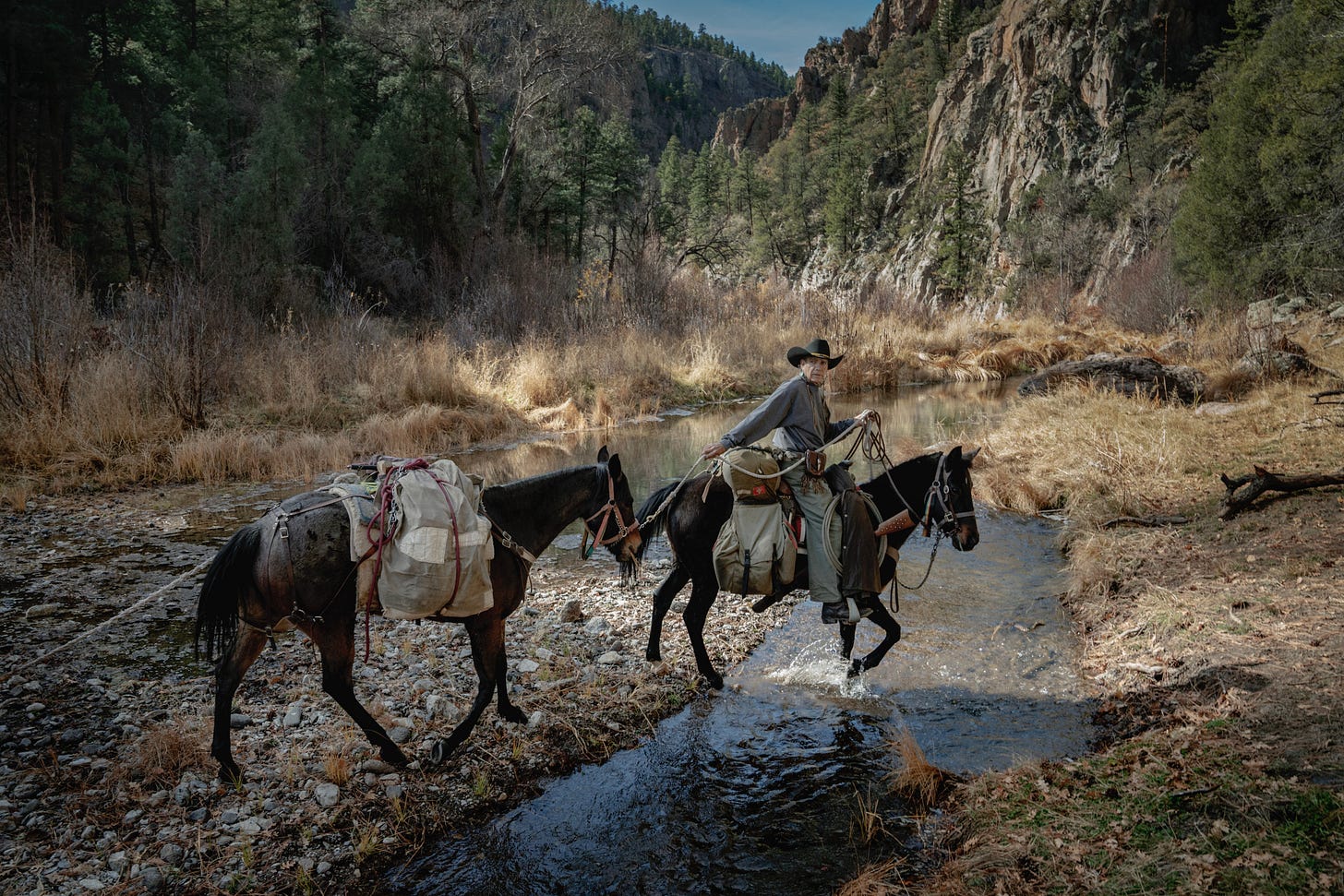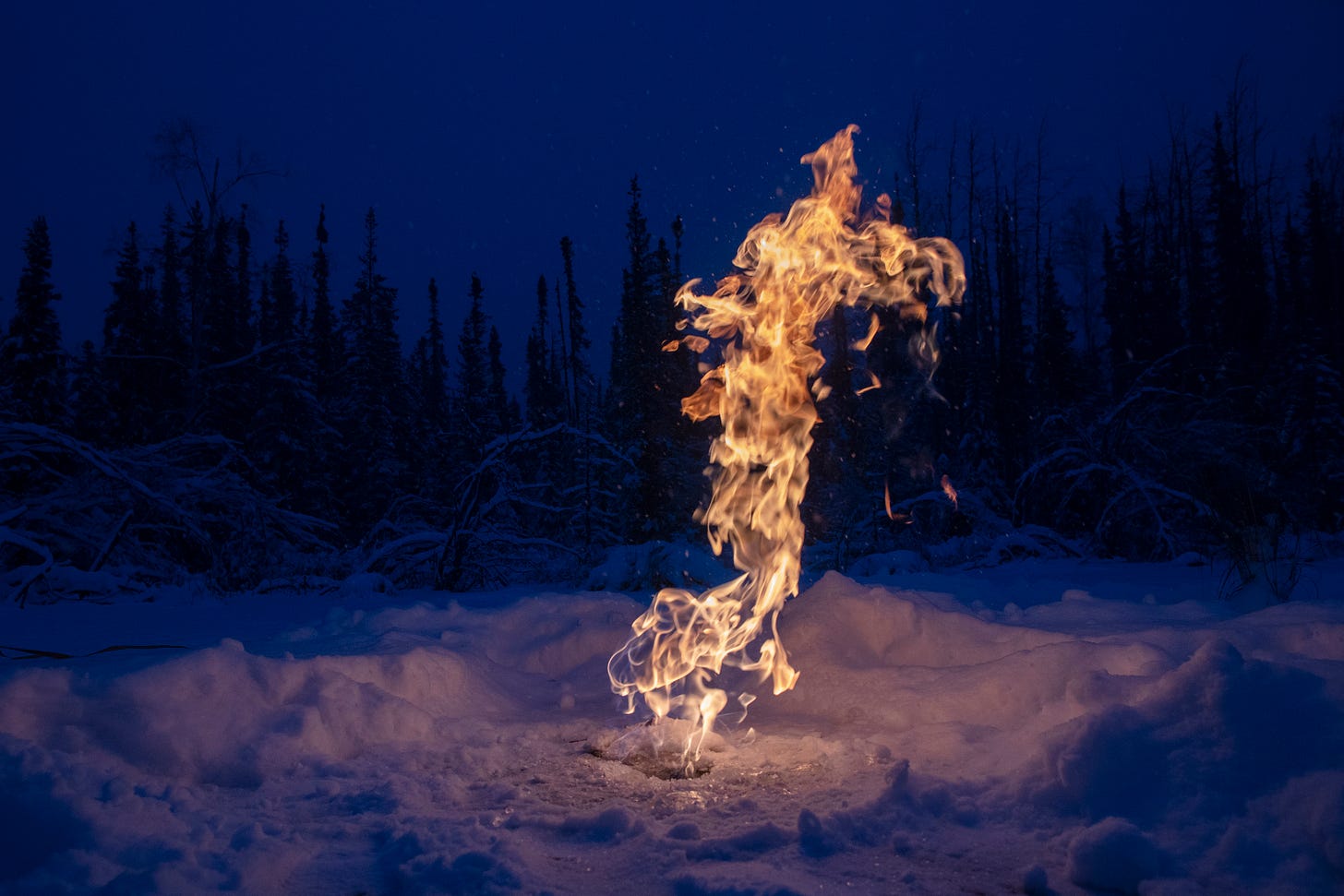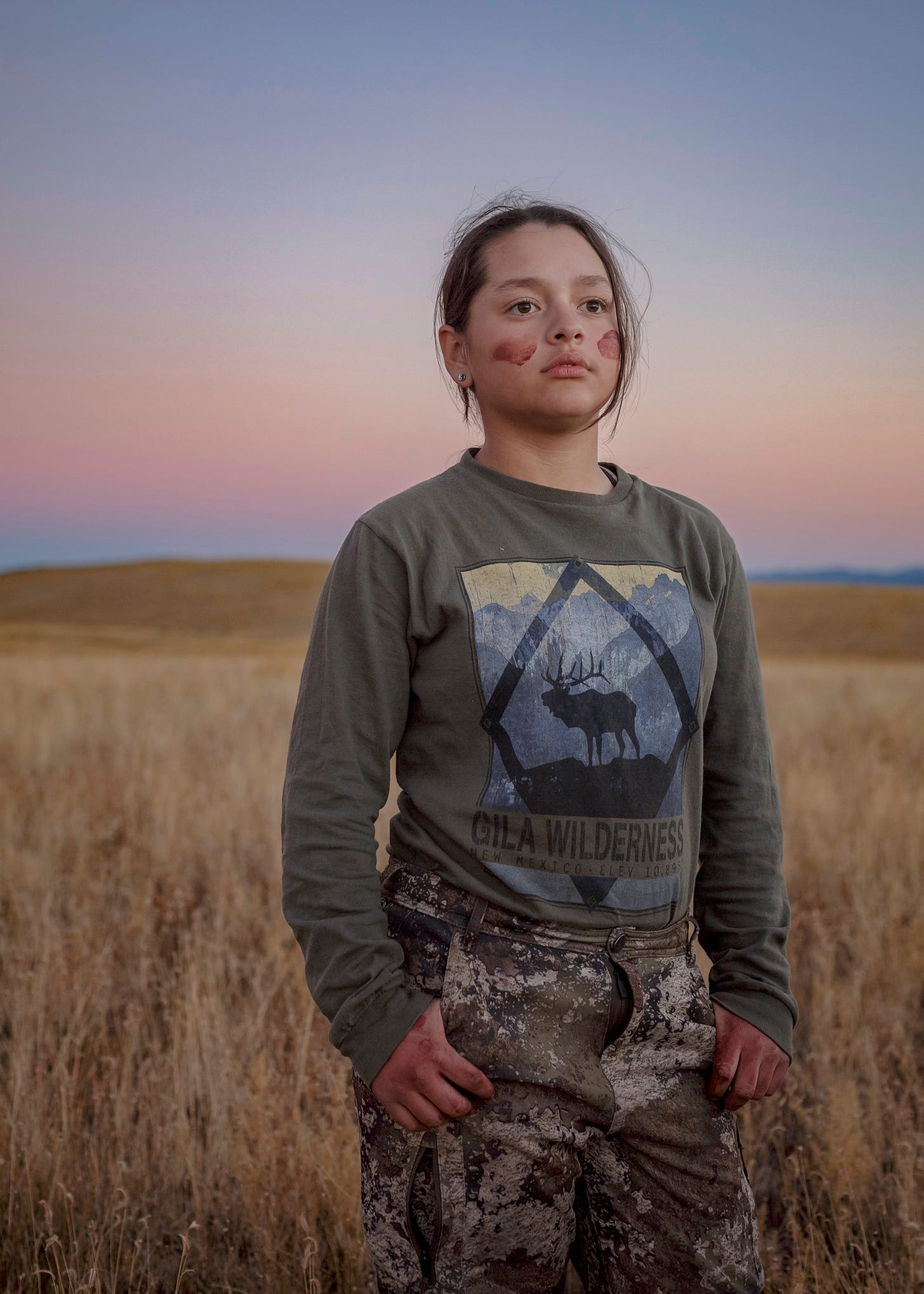Chasing Wilderness
A conversation with photographer Katie Orlinsky about conservation, climate change and caribous.

After years covering the war on drugs in Mexico and conflict in the Middle East and North Africa, photographer Katie Orlinsky shifted her focus to the Arctic. I talked to her about the difficulties in covering climate change and the idea of wilderness.
At the beginning of your career you focused on conflict. The earliest I remember your work from is from Libya in 2011. What drew you to it?
I was an activist when I was a teenager and interested in politics and social issues. I learned early on that I was a better photographer than I was at organizing or activism. I didn't have the brain for paperwork, for being indoors, being on a computer.
I was really drawn to photography with this idealistic image that I think a lot of young photographers have: I can shine a light on atrocities. I can make a difference. But of course, we've learned a lot since then about what our role is. I do still think photographers can make a difference, but it is not in the same way that we did when we were younger.
I always had the thought that the stories I choose to tell are going to be my version of activism. They can influence politicians and make a difference, educate the public or empower the people who are considered the subjects of the story just by paying attention to them, listening to them and sharing what they want you to share.
But you have moved away from conflict. Can you tell me why?
Whenever a big news story was happening, I wanted to be there. I was naive. You don't realize the toll it will take on you; you think you're invincible; you don't realize what could happen to your colleagues; you don’t know what could happen to you psychologically.
It was difficult after Libya [where Katie survived the attack that killed Tim Hetherington and Chris Hondros in April 2011] and after so many years working on the drug war in Mexico, which just wasn't getting better at that point. The death toll just went up, you didn’t see any reprieve and there was complete impunity. It just got normalized. It was a really dark and heavy time for me.
And then you moved to stories on nature, mostly in the Arctic. How did this come about?
During this same period, I was documenting migration in Central America and was really struggling with it. I didn't feel like I had the emotional strength to do the work. And I didn't know what other kind of photography I could do because that was always the type of work that I had been drawn to.
But I got very lucky to get a random assignment to photograph a thousand mile dog sled race in the Yukon of Canada. It came out of nowhere. I headed up there in February of 2014 and it was the most beautiful place I'd ever seen.
I hadn't even wanted to take pictures for years. I was just doing it because I had to make money. And I thought, oh, at some point, my heart's going to get back into this. I was also considering changing careers. But up there, all I wanted to do was photograph. I was just fascinated by everything.
Since then you have done a lot of work on climate change in the Arctic.
I'm from New York City. I don't have a lot of experience in the outdoors. I saw climate change as something I cared about, but it was very abstract. But seeing it first hand was life changing. That was the moment when I said, okay, here's a place that is really inspiring and challenging but beautiful. It really made me feel great to be there and tell all these stories. Then I started writing grants and pitching. Eventually, I was able to start building a little niche for myself in the Arctic and I've been covering it ever since.

The biggest story you've done, as far as I know, was on permafrost, where huge amounts of carbon get released, triggering a self-reenforcing warming effect. It's an existential threat.
Nobody's paying attention to it. And it could make all of our predictions, which are already dire, worse. That's very, very terrifying. I was at an event with NASA scientists four years ago and they were downplaying it. Then a year and a half ago, an IPCC report came out that basically says everything that the researchers found was correct. I'm hoping that eventually this becomes something that people look into, just as much as sea ice melt, because its impact is going to be huge.
Two days ago I was on a morning TV show, where they normally inform you about cleaning your pool or how to BBQ. I talked about the threat of climate change, about really depressing issues. Afterwards they told me that it was great and that they wanted to have me on again. I thought, that's weird, have you listened to me? Do you sometimes have that feeling too?
You want to balance the doom and gloom and not make people check out completely. I do feel the first step is people saying that's interesting or that image is beautiful. It's a way to get someone through the door.
Maybe it's not that the permafrost story that's going to make people understand, how this is the biggest crisis on the planet and that we have to take it seriously. But I think it's an entree to that. I think that this is what we can do with beautiful images.
The next step is that you are going to read about it or watch documentaries about it. And then you are going to start seeing the things that you can vote for, notice the changes politicians stand for. That's the goal. I try not to get disillusioned, otherwise I don't know how I could keep doing it.
For the last six, seven years, I’ve been really worried about climate change, but always on an abstract level. And last year I was in Iraq where you see climate change destroying an entire ecosystem. And I thought, oh shit, this is real and it is something I have to talk about. But I always come to this point, where people say, great images and I want to answer, no, not really.
It's just going to become real for everyone eventually. And it's almost like we're helping people get ready for this reality. But also, the more we can learn from folks that are experiencing it first, the hope is that we can just get enough knowledge and lessons to apply in the future. What's happening in Iraq or in the Arctic is just going to happen everywhere.
Recently, you did a story on the Gila Wilderness, the world's first designated wilderness, which is in itself a contradiction. What has it taught you?
It's a magical place. And it carries this idea of untouched wilderness. Unlike most national parks, you find in the United States, there are no mechanised vehicles, no roads. Even when they reintroduce animals, they'll do it on the back of mules and horses. But the entire idea of wilderness is in itself a contradiction. It has to be a human outsider that's designating something wilderness.
So there's this huge inherent contradiction in the idea of wilderness itself, because people have been making a life in these places. The Gila Wilderness only exists because it's Apache land. The Apache lived there and they cared for it. And of course, they shaped it. People have been shaping wilderness since there have been people. And because of the Apache fiercely protecting this area from ranchers and the U.S. military in the late 1800s, it was able to become a designated wilderness area. It became stolen land like all land in the United States.
But does wilderness mean taking it back to what it would originally be without people? And what's the date that you find the perfection of a place? Part of the reason why they made it a designated wilderness area is that they wanted it to be a place where men can go hunting and fishing. The founders literally wanted to make it a place where a man can go on a two week trip without encountering civilization. So it is wilderness though a male colonial gaze.
What did you learn about conservation?
I thought it was going to be really obvious what was right and what wasn’t. And I thought I wasn't going to agree with people that aren't aligned with me politically. But in fact, people who aren't had some really good points and they know the landscape very well. It showed to me how complicated conservation is.
For example, they introduced the rainbow trout because they wanted to make an angler's paradise. They brought in the rainbow trout and then the Gila trout went extinct. In order to reintroduce the Gila trout in the sixties, they killed rainbow trout they had introduced before, which in turn ended up killing all sorts of bird species. And then they introduced the trout again.
We have this idea of forest being the pinnacle of wilderness. But in reality, dense forests exist because we killed all the big mammals. In Germany, some of the wildest places are former army training grounds, which have seen a lot of destruction. But from that destruction emerges biodiversity. In the end it is probably closer to true wilderness.
The same goes for fire management. We have been suppressing fires for so long and now we realize we're not supposed to suppress them, we’re supposed to control them. And that's been shaping wilderness all over the world as well.

Tell me about chasing caribous.
It is the story I've been most obsessed with over the past years. If anywhere there is still a wild place, it is where the caribous live, the North American Arctic – Alaska and Canada. It's the last place to be developed, because it's so far away. And because of that, a lot of animals have been pushed there. I'm really drawn to telling stories there because I do feel like if anywhere is still a wilderness, it is there. But now, sadly, we're seeing wildfires in the Northwest Territories and the caribous are in decline..
I did not grow up with any connection to nature. And I think about my father, who still has absolutely none. The other day he wrote to me that he watched a BBC special about caribous. I've been doing a story about caribous for three years and it seemed, he couldn't care less. But for some reason, there's one TV program and I feel it really got him, something really clicked with him and he started to care. That's the hope, right? It would have been nice if it was my work that did that for my own father.
Maybe it was.
Maybe it was.



